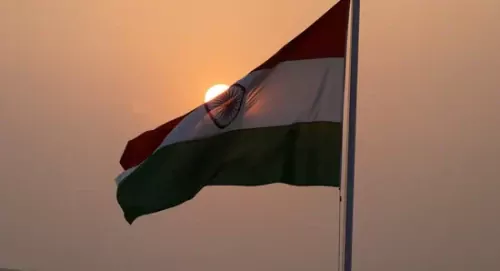
India is a land of diverse cultures and languages, with over 21 officially recognized languages and hundreds of dialects. While Hindi and English are widely spoken across the country, there is a rich heritage of Indian languages that add to the country's linguistic and cultural diversity. In this blog post, we'll take a closer look at the history, features, and significance of one of these languages, which is important to Indian culture and heritage.
Let's start with a brief history of the Indian language in question. The language has a long and rich history, dating back to ancient times. It is one of the oldest living languages in the world and has been continuously used for thousands of years. The language has undergone significant evolution over time and has been influenced by various other languages and cultures, including Sanskrit, Persian, and Arabic.
The language is known for its unique script, which is distinct from other scripts used in India. It uses a combination of letters and symbols to represent sounds, and the script has been used for both written and oral communication for centuries. The script is also known for its intricate calligraphy and is considered an art form in its own right.
In terms of grammar, the language has a rich and complex structure, which has been influenced by Sanskrit grammar. It is known for its use of complex verb conjugations and noun declensions, which can make it a challenging language for those who are not familiar with it. However, it is also a highly expressive language and allows speakers to communicate a wide range of emotions and nuances.
The language is widely spoken in a particular region of India and is an important part of the cultural heritage of the people who live there. It is used in various domains, including literature, poetry, music, and daily conversation. The language has also produced a wealth of literary works, including poems, songs, and plays, which are an important part of the cultural heritage of the region.
Despite its rich history and cultural significance, the language has faced challenges in recent years. With the rise of English and other widely spoken languages, the use of this language has declined, and there is a concern that it may become a lost language in the future. This is especially true for younger generations, who are increasingly exposed to English and other languages and may not see the value in learning and preserving their ancestral language.
However, there is also a growing movement to preserve and revive the language. This includes efforts to promote the language in schools and communities, as well as to encourage the use of the language in daily life. There are also efforts to digitize the language and make it more accessible to people around the world.
Hindi is an Indo-European language that is widely spoken in India and around the world by over 258 million people. It is one of the official languages of India and is also the fourth most commonly spoken language in the world. Hindi is a member of the Indo-Aryan branch of the Indo-European language family and has roots in Sanskrit, an ancient language that was widely used in India for religious and literary purposes.
Hindi is written in the Devanagari script and is the primary language used in the northern and central regions of India. The Hindi language is an important part of Indian culture and has played a significant role in the country's history, from being used in religious texts to being a symbol of national unity.
Hindi is also an official language in Fiji and is spoken by a significant number of people in other countries, including Mauritius, South Africa, Guyana, Trinidad and Tobago, Suriname, and Nepal. It has also been recognized as a minority language in several other countries.
In India, Hindi is taught in schools as a second language and is used in government and media. The popularity of Bollywood films and the growing influence of the Indian diaspora have helped spread the use of Hindi around the world.
Hindi is a rich and diverse language, with a range of dialects and a vocabulary that has been heavily influenced by Arabic, Persian, English, and other languages. It is a flexible and expressive language that is able to convey a wide range of emotions and ideas.
In conclusion, the Indian language we have discussed is a rich and vibrant part of India's cultural heritage. Despite facing challenges in recent years, there is a growing movement to preserve and revive the language, which is an important step towards ensuring that this valuable cultural legacy is not lost. By raising awareness about the significance of this language and encouraging its use, we can ensure that it remains a vibrant and living part of Indian culture for generations to come.
Recent Posts

Understanding Translation Serv...

Agenzia di Traduzione a Roma: ...

Die Essentielle Rolle von Übe...

Die Essentielle Rolle von Übe...

Die Essentielle Rolle von Übe...

La Traduction Assermentée: Un...
Share it.
© Copyright 2022 LLC


